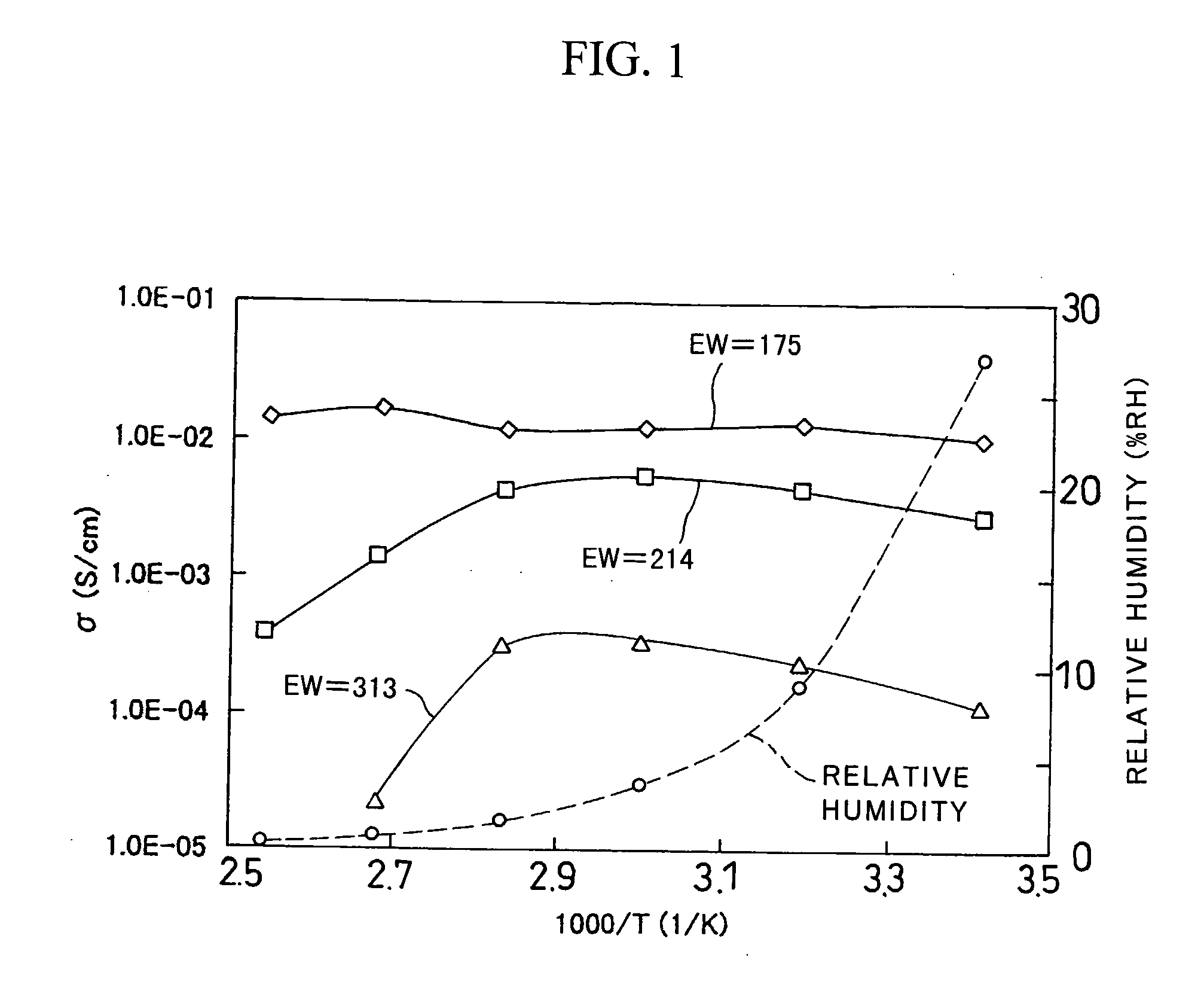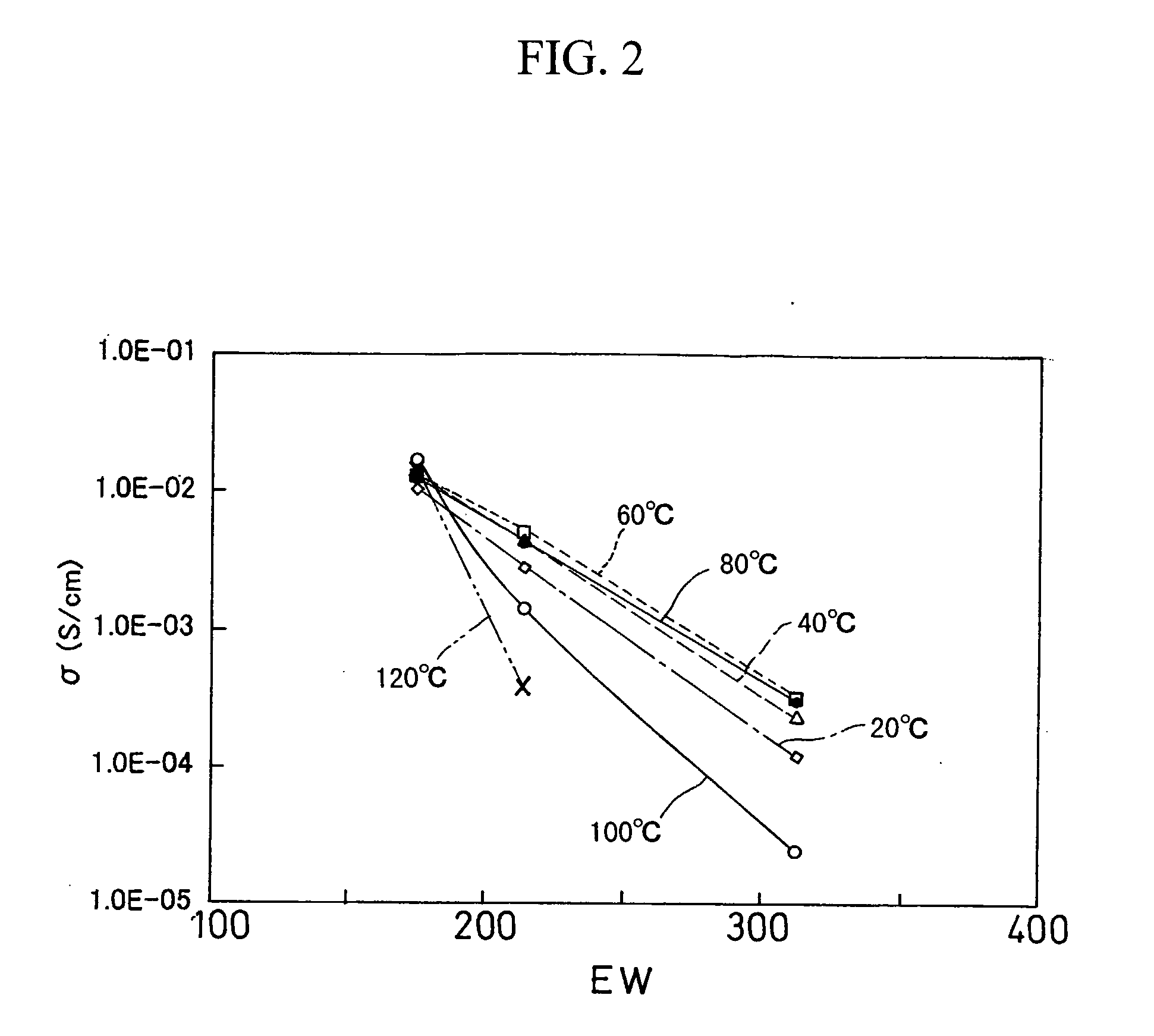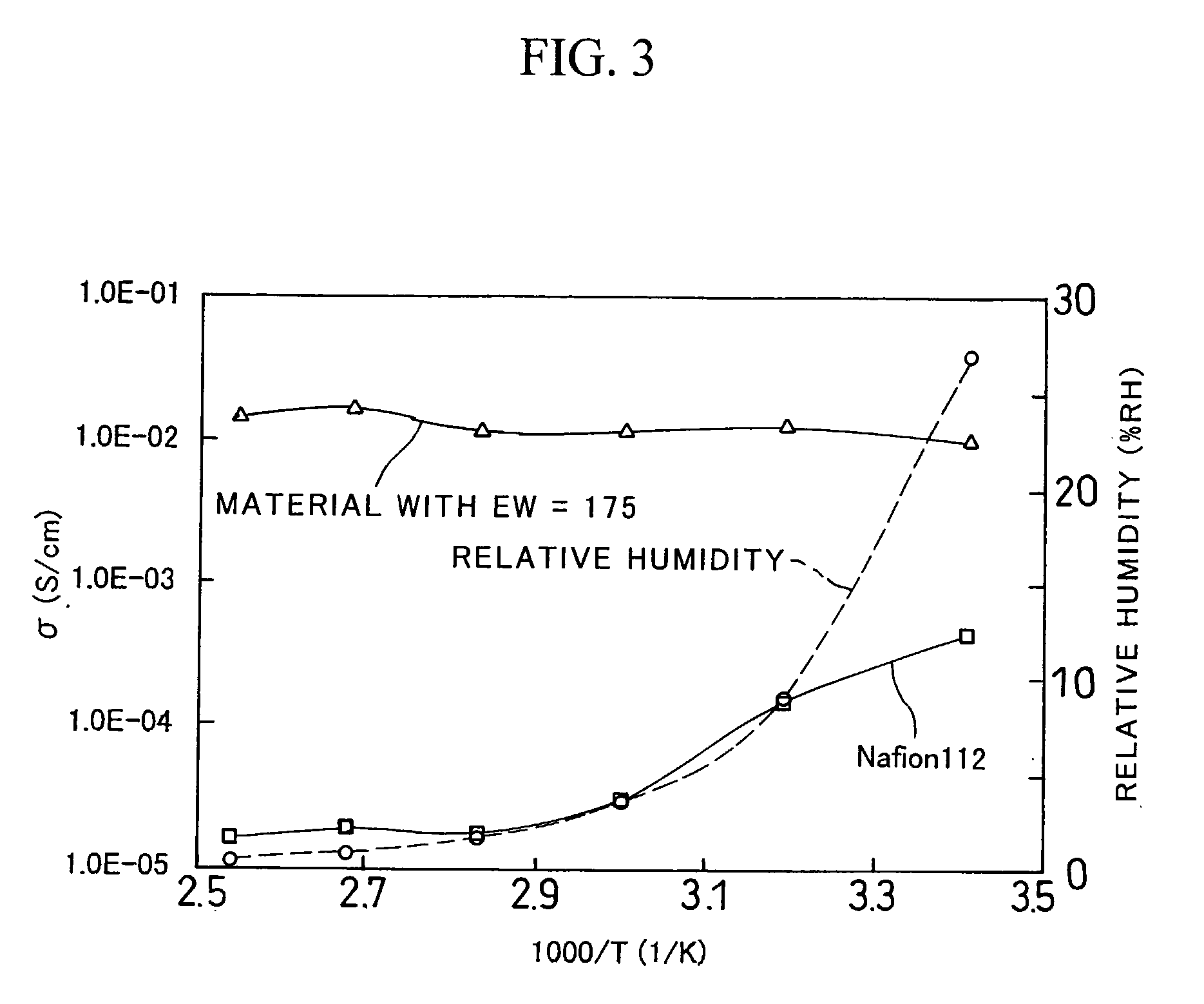Proton-Conducting Material, Solid Polymer Electrolyte Membrane, and Fuel Cell
- Summary
- Abstract
- Description
- Claims
- Application Information
AI Technical Summary
Benefits of technology
Problems solved by technology
Method used
Image
Examples
Embodiment Construction
[0036] In the following, the present invention is more specifically described with reference to examples.
[Synthesis of Proton-Conducting Material]
[0037] Using 3-mercaptopropyl-trimethoxysilane (MePTMS) and tetramethoxysilane (TMOS) as starting materials, the density of proton source was increased by a sol-gel method. In the following reaction scheme, by selecting the ratio of m to n, proton-conducting materials were synthesized, such that EW was 175 when m:n=1:0, 214 when m:n=0.6:0.4, and 313 when m:n=0.3:0.7.
[0038] The following describes the details of individual reactions. [0039] (1) MePTMS and TMOS were mixed with t-butyl alcohol (t-BuOH), thereby obtaining a solution A. The mixture ratio was (MePTMS+TMOS):t-BuOH=1:4 (mol ratio). [0040] (2) A hydrogen peroxide solution in five times the volume of MePTMS (mol ratio) was mixed with t-BuOH, thereby obtaining a solution B. The mixture ratio was H2O2:t-BuOH=1:4 (mol ratio). [0041] (3) The solution B was slowly added dropwise whil...
PUM
| Property | Measurement | Unit |
|---|---|---|
| Weight | aaaaa | aaaaa |
| Electrical conductor | aaaaa | aaaaa |
Abstract
Description
Claims
Application Information
 Login to View More
Login to View More - R&D
- Intellectual Property
- Life Sciences
- Materials
- Tech Scout
- Unparalleled Data Quality
- Higher Quality Content
- 60% Fewer Hallucinations
Browse by: Latest US Patents, China's latest patents, Technical Efficacy Thesaurus, Application Domain, Technology Topic, Popular Technical Reports.
© 2025 PatSnap. All rights reserved.Legal|Privacy policy|Modern Slavery Act Transparency Statement|Sitemap|About US| Contact US: help@patsnap.com



